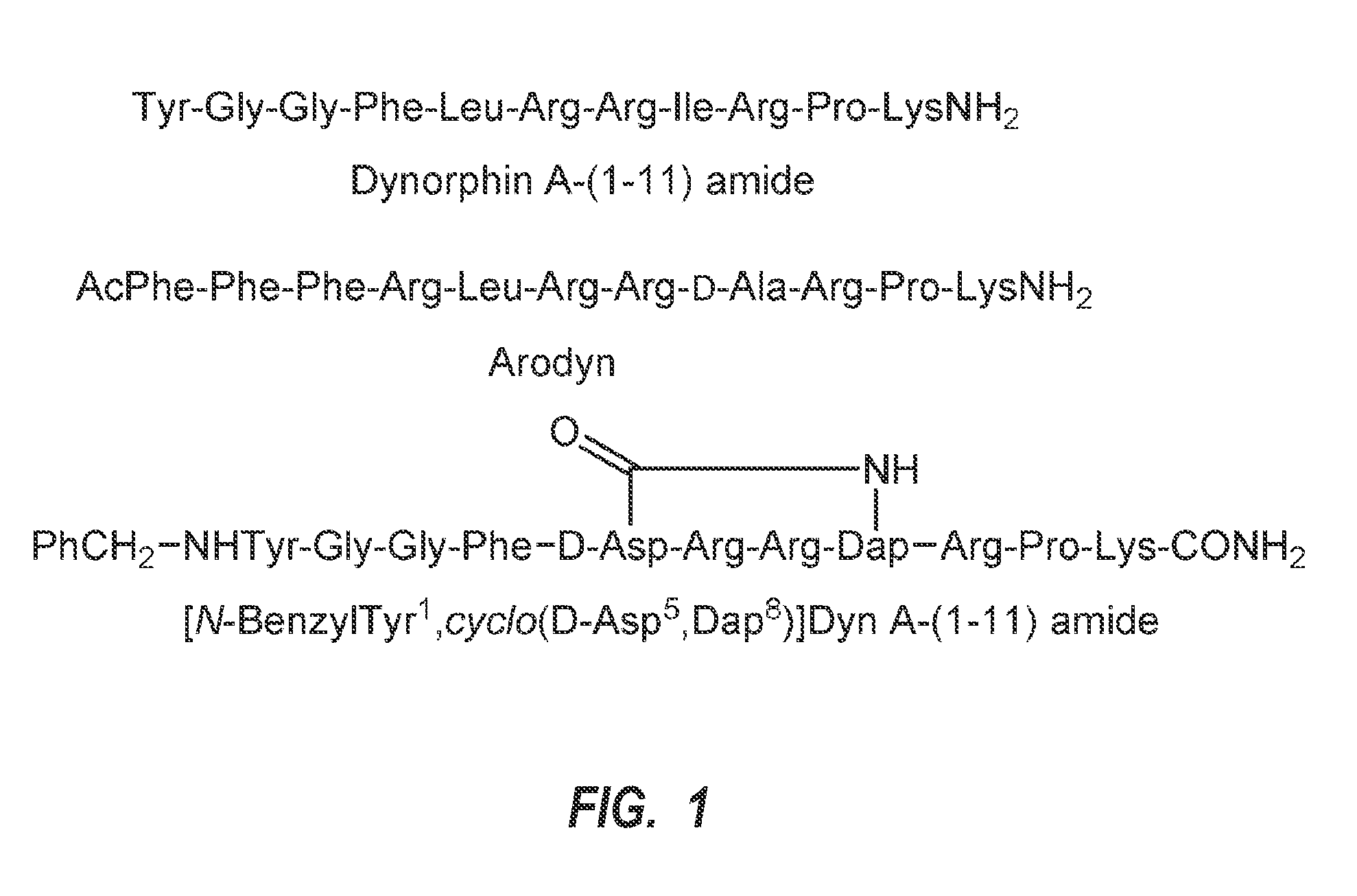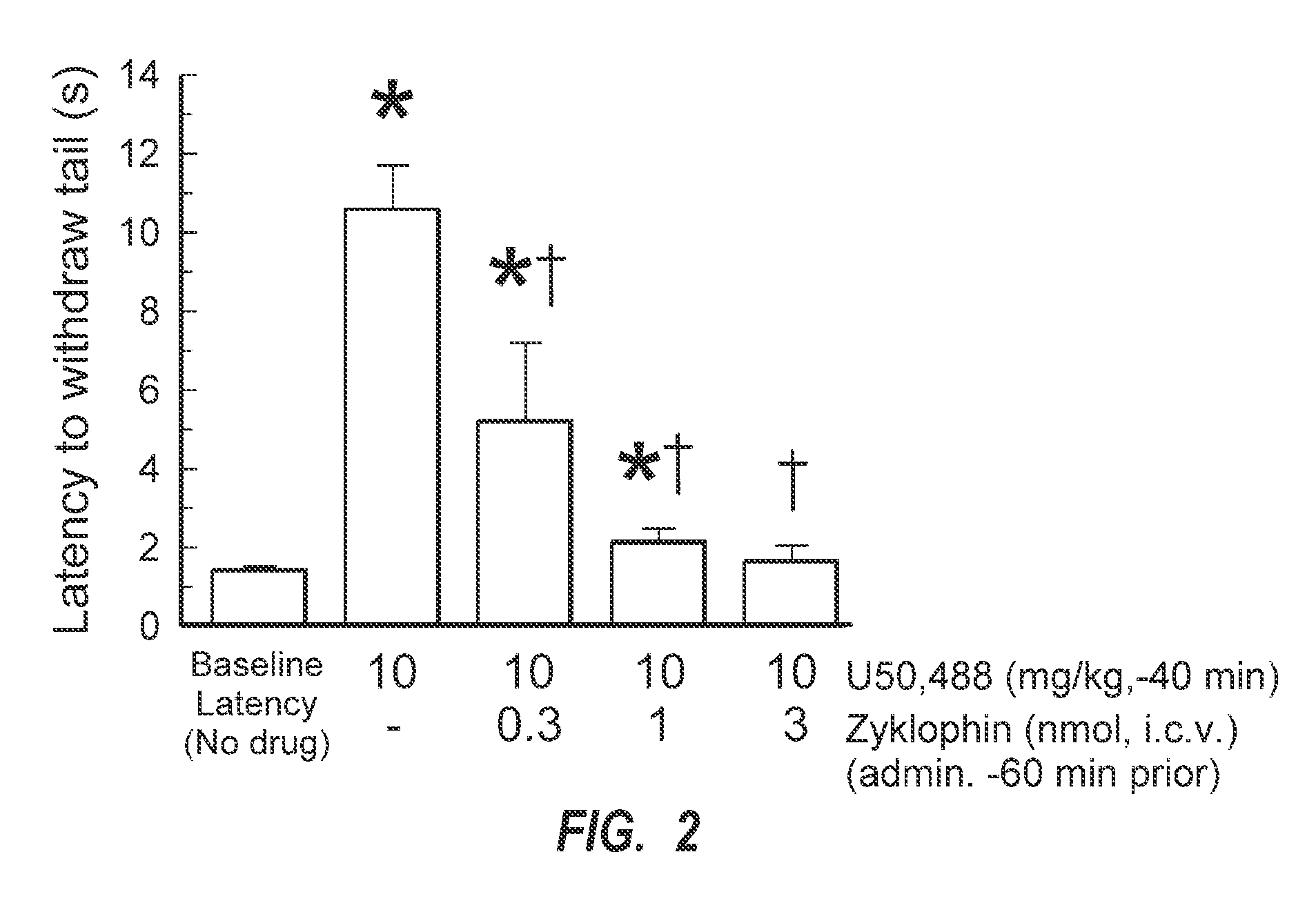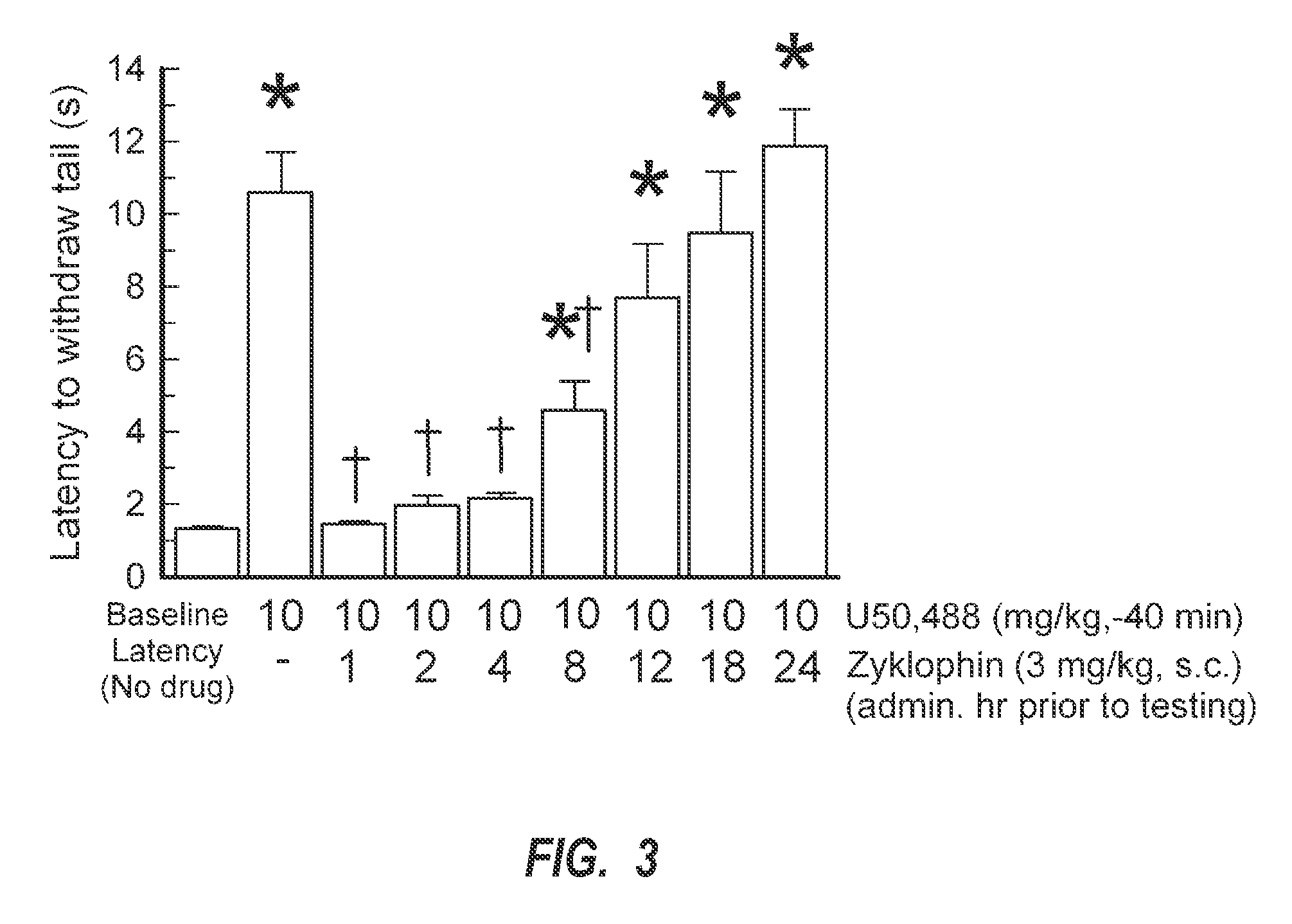Method for treating and/or preventing drug seeking behavior
a drug seeking behavior and drug technology, applied in the field of drug seeking behavior treatment and/or prevention, can solve the problems of unstable polypeptide kor antagonists, inability to cross the blood brain barrier, and inability to use systemic administration, etc., and achieve the effect of preventing drug seeking behavior
- Summary
- Abstract
- Description
- Claims
- Application Information
AI Technical Summary
Benefits of technology
Problems solved by technology
Method used
Image
Examples
example 1
[0107]Zyklophin was examined for its ability to antagonize the analgesic activity of the KOR agonist U50,488 in the 55° C. warm water tail withdrawal assay in order to determine effective doses to use in subsequent assays. Initially, the zyklophin peptide was administered directly into the brain (e.g., intracerebroventricularly, i.c.v.,) to establish KOR antagonist activity. As shown in FIG. 2, zyklophin can reverse the effects of U50,488 in a dose-dependent manner, thereby verifying that it exhibits KOR antagonist activity in vivo. Zyklophin was administered intracerebroventricularly at 0.3, 1, or 3 nmol / mouse, and U50,488 was administered intraperitoneally (i.e., i.p.).
[0108]Baseline tail-withdrawal responses were first characterized for all mice (left-most bars of each figure). Antinociceptive effects of U50,488 (10 mg / kg, i.p.) in mice pretreated 1 h with zyklophin through the (FIG. 2) i.c.v. route of administration. Tail-withdrawal latency was measured in the mouse 55° C. warm-...
example 2
[0110]In a subsequent assay the peptide was administered systemically (e.g., subcutaneously). Zyklophin was administered subcutaneously to reverse the analgesic activity of U50,488. More particularly, zyklophin was administered subcutaneously at 0.3, 1 or 3 mg / kg, and U50,488 was administered intraperitoneally. The data of Figure 4 indicates that the zyklophin peptide is systemically active. Such activity is obtained by zyklophin traversing the BBB with sufficient activity to function as a KOR antagonist. Additional discussion is found in Example 1 above.
example 3
[0111]Additionally, data shown in FIG. 3 confirmed the duration of in vivo kappa-opioid receptor antagonist effects of zyklophin in C57B1 / 6J mice using the 55° C. warm-water tail-withdrawal test. A number of nonpeptide kappa-opioid receptor-selective antagonists, such as nor-binaltorphimine and JDTic, demonstrate a prolonged duration of action (Horan et al., 1992). As such, the duration of kappa-opioid receptor antagonism produced by a single dose of zyklophin was studied. Mice were pretreated through the subcutaneous route with zyklophin (3 mg / kg, s.c.) 80 min to 23.3 (24 h) in advance of an intraperitoneal administration of U50,488 (10 mg / kg), and antinociception measured in the 55° C. warm-water tail-withdrawal test (FIG. 3). As shown, intraperitoneal administration of the kappa-opioid receptor agonist U50,488 (10 mg / kg) produced significant antinociception 40 min after administration (FIG. 3, second bar from left), significantly greater than the baseline tail-withdrawal latency ...
PUM
| Property | Measurement | Unit |
|---|---|---|
| Stability | aaaaa | aaaaa |
| Stress optical coefficient | aaaaa | aaaaa |
| Selectivity | aaaaa | aaaaa |
Abstract
Description
Claims
Application Information
 Login to View More
Login to View More - R&D
- Intellectual Property
- Life Sciences
- Materials
- Tech Scout
- Unparalleled Data Quality
- Higher Quality Content
- 60% Fewer Hallucinations
Browse by: Latest US Patents, China's latest patents, Technical Efficacy Thesaurus, Application Domain, Technology Topic, Popular Technical Reports.
© 2025 PatSnap. All rights reserved.Legal|Privacy policy|Modern Slavery Act Transparency Statement|Sitemap|About US| Contact US: help@patsnap.com



